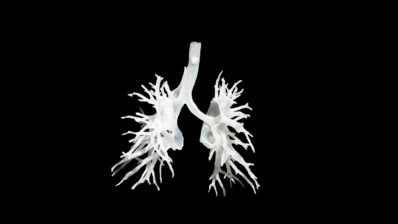A group of IMIM researchers has established for the first time a quantitative relationship between the affinities of the endogenous metabolites and of the drugs for the same proteins.
The thousands of proteins that make our body work are often regulated by small molecules that our body synthesizes, called “endogenous ligands“. Each endogenous ligand binds to its target protein – like a key to a lock – with a certain affinity, which has been determined after millions of years of evolution.
Drugs are a synthetic version of these molecules – they are also aimed at regulating certain proteins that are involved in some diseases. So far, in order to design new drugs, scientists have always tried to achieve the maximum affinity of the drug towards its target protein. The idea is that this would increase selectivity; if the drug binds “a lot” to its target protein, it will not bind so much to other similar proteins (what is known as “residual affinity“).
But, until now, no one had looked at the affinity of the endogenous ligand for that same target protein, and compare it with the drug’s affinity.
This is what Jordi Mestres‘ research group has done with 566 drugs that interact with 129 proteins. They have observed that 71% of these drugs have higher affinities for their target proteins – in most cases more than two orders of magnitude – than do the endogenous ligands.
Beyond giving a threshold of affinities when designing drugs for a given target, the study allows comparing the residual affinities of the drug for third proteins with the affinities of the endogenous ligands for those same proteins, in order to predict if the drug will have side effects. If the affinity of the drug for a protein (which is not its target) is greater than the affinity of the endogenous ligand towards the same protein, the drug will probably bind and have side effects.
“This study allows us to better anticipate if the drug’s affinities for proteins that are not its target will be biologically relevant”
Jordi Mestres
The results can guide the improvement of drug risk assessment and reduce the percentage of discarded drugs during the development process. “It is one more factor to consider. Before looking for a synthetic molecule, it makes sense to look at what biology has already selected”, says Mestres.
“It seems quite obvious, but so far no one had noticed: our own molecules, naturally optimized by evolution, establish the necessary frameworks to design more efficient and safe drugs”, concludes the coordinator of the Systems Phamacology research group.
(video in Catalan)
You can read more about this work in a commentary published in Nature Review Drug Discovery, or in this editorial posted in Drug Discov Today.
Bofill A, Jalencas X, Oprea TI, Mestres J. The human endogenous metabolome as a pharmacology baseline for drug discovery. Drug Discov. Today 2019, 24(9), 1806-1820. doi: 10.1016/j.drudis.2019.06.007







